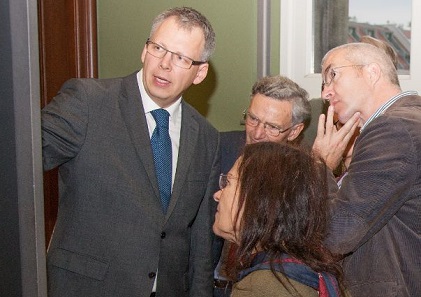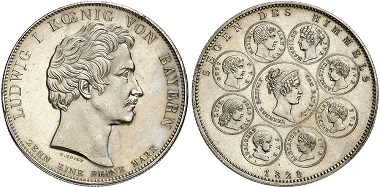by Annika Backe
July 7, 2016 – Slightly more than a year ago, CoinsWeekly reported on Google Cultural Institute, a kind of platform for exhibitions that either exist in physical form in museums already or are created specifically for this internet offer. While that project is provided with material by the cultural institutions, “Art Camera” is now visiting the museums.
The principle is simple: Using state-of-the-art technology, a Google team creates so-called gigapixel images of the works of art from different angles. Once uploaded to the internet, the user can then zoom into these super-high-resolution images. To date, almost 1,400 objects and artefacts can be studied this way.
The press releases of the media giant sound smashing, praising Google Art Camera as a way to preserve the works of the greatest artists of mankind for future generations. Sitting comfortably at the PC, the user could not just look at art but see details that were hitherto almost invisible to the naked eye.
The director of the Berlin Münzkabinett, Prof Dr Bernard Weisser, giving visitors a tour.
At this point, it gets interesting. Could the new project become a chance for institutions that exhibit small-scale objects, like coins? When asked by CoinsWeekly, Prof Dr Bernhard Weisser of the Münzkabinett of the Staatliche Museen zu Berlin, replied: “The museums are already collaborating with Google as it is. As a basic principle, we follow an open-access-policy. This means that we make our collections, which we publish online, also accessible for scientific purposes.”
Sometimes only a magnification can reveal every single aspect of a coin design. Geschichtstaler “Segen des Himmels”, Louis I, 1828. Ex Künker Auction 246 (March 11, 2014) Lot 3686.
Responsible for more than 500,000 original numismatic objects, Prof Weisser is also aware of possible negative aspects: “As a matter of fact, Google does not show everything, but a selection, according to interests. There is the potential danger that these activities – which may turn out to be even more attractive than what the museums can accomplish – could lead to a shift in the perception of the objects. On the other hand, we clearly say: Every activity that increases the objects’ visibility is worth supporting. And the other thing is: We are not afraid at all that somebody who has seen the objects on the internet might abstain from visiting our museum. We rather see that the opposite holds true: More information leads to more visitors.”
So, everything is perfectly fine? As of now, no coin cabinet has yet been visited by the Google camera team. Therefore, it remains to be seen whether or not “Art Camera” will prove to be a chance especially for numismatics.
Generally speaking, however, there is some skepticism: Despite all well-sounding goals, Google.Inc is highly likely to pursue commercial objectives with this project, too. And so art becomes another segment in which the enterprise will exploit its quasi-monopoly situation to “google-ise” our world. If we want to see this happen is something everybody must decide for himself.
Please find the website of Google Art Camera here.
This is the CoinsWeekly article on Google Cultural Institute.
The internet presence of the Berlin Münzkabinett can be found here.
And you don’t need Google to have a look at the treasures of the Berlin Münzkabinett since they are compiled in its Online Catalogue.






